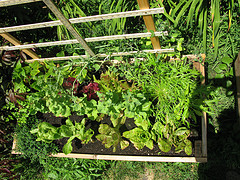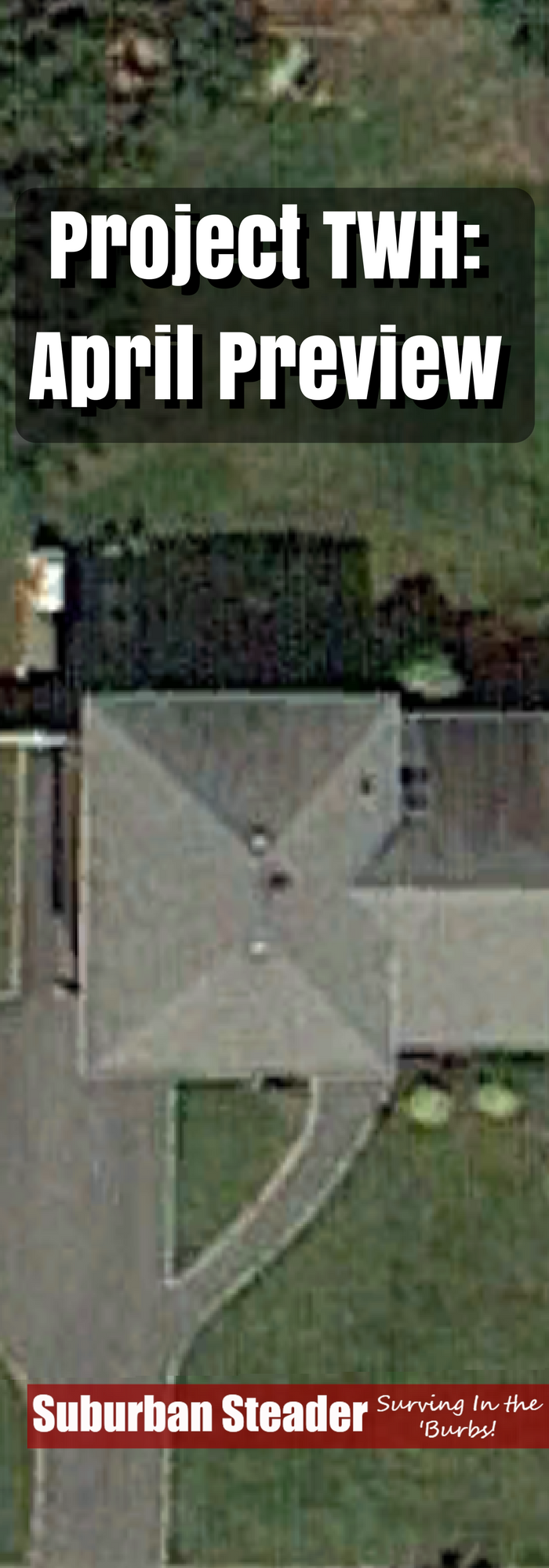April Preview – Project TWH
In the April Preview of Project TWH, we’ll review the tasks we have lined up for this month. A lot of these tasks are planning-related. This April Preview couldn’t come at a better time for us. The weather is finally warming up here on Long Island which means it’s time to start planning our suburban homestead activities for the upcoming growing season.
In The Weekend Homesteader, Anna Hess outlines four tasks that we’ll tackle in April:
- Find Room To Homestead
- Survey Your Site
- Plan Your Summer Garden
- Kill Mulch
Find Room To Homestead
- Goal: Seek out growing space even if you don’t own land
- Cost: $0
- Time: 1-2hrs
- Difficulty: Medium
- Kid-Friendly: Maybe
This task is rather simple despite the semi-ambiguous title. We’ll spend a little time figuring out what we have in terms of our land. During this time, we’ll take a look at what we can change/use/not use to grow and improve our suburban homestead. We’ll look at the kind of land we have – lawn, forest, unused areas, etc – as well as areas where we might want to consider non-conventional approaches to suburban homesteading. In addition, we’ll consider the use of areas beyond our yard (empty lots, churches, neighbors’ yards, schools, etc.) for expansion of our suburban homesteading use.
 Survey Your Site
Survey Your Site
- Goal: Figure out the assets and problems presented by your yard and community
- Cost: $0-5
- Time: 2-5hrs
- Difficulty: Medium
- Kid-Friendly: Maybe
Now that we’ve identified WHERE we are going to homestead, it’s time to figure out HOW we’re going to homestead. We’ll start by sketching a map of our land – don’t worry, you can print out images from Google Earth if you failed art – and determine what we really have to workout. The map can be used to develop a sun and shade profile (possible in conjunction with Google Earth and SketchUp Make). It will also be used to determine paths commonly used on the property. Similarly, we will identify areas that are accessed the most and areas accessed the least. The soil in each area will be analyzed for its ability to grow crop. The culmination of this information will allow us to create a plan for our land and determine what activities will take place where.
Plan Your Summer Garden
- Goal: Decide on the size, location and layout of your summer garden and choose the vegetables to plant
- Cost: $0-20
- Time: 1hr
- Difficulty: Easy
- Kid-Friendly: Maybe
Again, this task is fairly simple – we’ll take a look at the site survey and determining what we’ll plant where. Each location and layout within each location will be reviewed. In addition, a small discussion on record keeping and it’s importance for a suburban homestead will take place. The end result will be a list of vegetables we intend on growing. We’ll also develop a general plan for where on the property each vegetable will be grown.
Kill Mulch
- Goal: Prepare a garden plot without tilling the soil
- Cost: $0-100
- Time: 1-4hrs
- Difficulty: Medium
- Kid-Friendly: Maybe
Finally a task that involves real work and not just paper and pencil planning! Kill mulch is “an easy way to turn last year’s vegetable plot…into a no-till garden” according to The Weekend Homesteader. In the simplest description, we’re going to chop the current growth as close to the ground as we can, lay down some mulch or compost that has seeds in it, followed by wet cardboard or newspaper. The kill mulch will be finished with weed-free compost and a thick layer of mulch. This approach will ensure our garden area does not have any growth that we don’t want and will also build up the health of the soil.
Conclusion
So there you have it, the April Preview of Project TWH. There’s not many of exciting things in this month’s task list but a lot of important steps to set up for a successful suburban homestead. As the information and plan evolves, so will the homestead. Now that we’ve laid out the plan for the month, we’ll keep you updated as we start to execute on each of these tasks. Looks like the beginning of a fun journey!
Like what we’re doing here? How about letting us know in the comments or on Facebook?
photo credit: roman.petruniak via photopin cc
